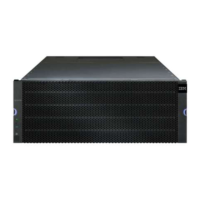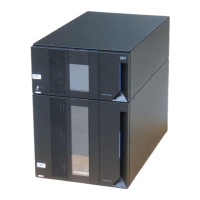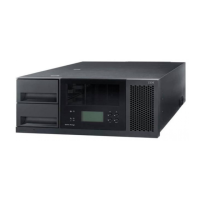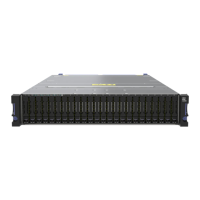The recurring syntax and the syntax values that you can use with the syntax are listed in the following
table:
Note: A command statement appears in a monospace font. The statement variables are in a monospace
italic font. Options are described separately, and usually the choices are shown as TRUE or FALSE,asa
letter (a), a number (42), or a number-range (0-99) selection.
Table 2-4. Recurring Syntax Elements
Recurring Syntax Syntax Value
raid-level
(0|1|3|5|6)
repository-raid-level
(1|3|5|6)
capacity-spec
integer-literal[KB | MB | GB | TB | Bytes]
segment-size-spec
integer-literal
boolean
(TRUE | FALSE)
user-label
string-literal
Valid characters are alphanumeric, the dash, and
the underscore.
user-label-list
user-label {user-label}
create-raid-logicalDrive-attr-value-
list
create-raid-logicalDrive-attribute-value-
pair {create-raid-logicalDrive-attribute-
value-pair}
create-raid-logicalDrive-attribute-
value-pair
capacity=capacity-spec | owner=(a | b) |
cacheReadPrefetch=(TRUE | FALSE) |
segmentSize=integer-literal
usageHint=usage-hint-spec
noncontroller-enclosureID
(0-99)
slotID
(1-32)
portID
(0-127)
drive-spec
enclosureID,slotID or enclosureID,
drawerID,slotID, depending on the type
of storage enclosure
A drive is defined as two or three integer literal
values separated by a comma. Low-density
enclosures require two values. High-density
enclosures, those enclosures that have disk drive
drawers, require three values.
drive-spec-list
drive-spec {drive-spec}
enclosureID-list
enclosureID {enclosureID}
esm-spec-list
esm-spec {esm-spec}
Chapter 2. About the Script Commands 2-5

